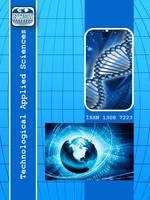PERFORMANCE STUDY ON CEMENTS
Cement, Concrete, Physical and Chemical Properties, Performance
___
- 1. ACI 308-92, (1994). Standard Practice for Curing Concrete, ACI Manuel of Concrete Practice, Part 2, pp:308-319.
- 2. Cilasun, N. ve Aksoy, N., (2000). Beton Yapı Hasarları Onarım ve Korunması ve Sıcak İklimlerde Beton, Lebib Yalkın Yayımları ve Basım İşleri A.Ş., İstanbul.
- 3. Davidovits, J., (1987). Concrete International, Dec., Vol:9, No:12, pp:28-36.
- 4. Delibaş, T., Çetin, C., Öztürk, M. ve Kırca, Ö., (2015). Çimento İnceliğinin Sabit Çökme Değerinde Betonun Basınç Dayanımına Etkisi, 9. Ulusal Beton Kongresi Bildiriler Kitabı (16-18 Nisan 2015), Antalya.
- 5. Erdoğan, T.Y., (2003). Admixtures for Concrete, Middle East Technical University Pres, Ankara.
- 6. Erdoğan, T., (2004). Soruları ve Yanıtlarıyla Beton Malzemeleri, Türkiye Hazır Beton Birliği Yayını.
- 7. Karagüler, M., (2002). Mimarlıkta Beton, Mimari Beton, Hazır Beton, Türkiye Hazır Beton Birliği, Yıl:9, Sayı:53, Eylül-Ekim.
- 8. Koçkal, N.U. ve Oğuz, C., (2015). Alkali ile Aktive Edilmiş Silis Dumanlı ve Zeolitli Harçların Özellikleri, 9. Ulusal Beton Kongresi Bildiriler Kitabı (16-18 Nisan 2015), ss:303-311, Antalya.
- 9. Mindess, S. and Young, J.F., (1981). Concrete, Prentice-Hall, Inc., New Jersey.
- 10. Neville, A.M., (1973). Properties of Concrete, London: Pitman Publishing.
- 11. Neville, A.M. and Brooks, J.J., (1987). Concrete Technology, Longman Scintific&Technical, John Wiley&Sons. Inc, New York.
- 12. Shah, P.S., Lange A.D., Li, Z.,and Mitsui, K., (1994). Relationship between Microstructure and Mechanical Properties of the Paste-Agregate Interface, ACI Materials Journal, Vol:91, No:l, pp:30-39, January-February 1994.
- 13. Starr, D., (1983). The Pyramids, Omni, Feb. pp:50.
- 14. Şahin, M., Mahyar, M. ve Erdoğan, S.T, (2015). Afşin Elbistan Uçucu Külü ve Yüksek Fırın Cürufu İçeren Çimentosuz Bağlayıcılar Hazırlanması, 9. Ulusal Beton Kongresi Bildiriler Kitabı (16-18 Nisan), Antalya.
- 15. Topçu, İ.B., Uygunoğlu, T. ve Karaman, E., (2015). Kendiliğinden Yerleşen Harçlarda Kullanılan Yüksek Fırın Cürufunun Yüksek Sıcaklık Performansına Etkisi, 9. Ulusal Beton Kongresi Bildiriler Kitabı (16-18 Nisan), Antalya.
- 16. Uğurlu, A., (1999). Agrega-Çimento Hamuru Bağı Üzerine, 2. Ulusal Kırmataş Sempozyumu'99, İstanbul-1999, ISBN B.16.0.KGM.0.63.00.03/606.1
- Başlangıç: 2009
- Yayıncı: E-Journal of New World Sciences Academy
Sabit OYMAEL, Özlem SALLI BİDECİ, Alper BİDECİ
HARMONİK EKLEME YÖNTEMİ İLE FIRÇASIZ DC MOTORUN (BLDC) HIZ DENETİMİ
ÖZDEĞER TABANLI ALGILAMA YÖNTEMLERİNDE EŞİK DEĞERİNİN ALGILAMA PERFORMANSINA ETKİSİ
Cebrail ÇİFLİKLİ, Fatih Yavuz ILGIN
HASSAS DÖKÜM YÖNTEMİ İLE ÜRETİLEN ALAŞIMLARIN MİKROYAPI VE SERTLİK ÖZELLİKLERİNİN ARAŞTIRILMASI
